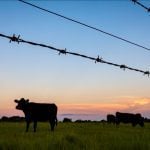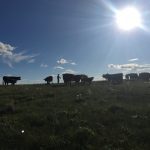Rick Bieber, a farmer from South Dakota, spoke at Western Canada Conference on Soil Health about the many practices he has implemented to improve his soil on his operation.


Retired farmer Rick Bieber spoke at the Western Canada Conference on Grazing and Soil Health

Longer rest period, daily moves and water infrastructure underpin Ryan Canart’s grazing system

The Living Lab, which spans the Alberta and B.C. border, has the potential to create a community of producers interested in trying new things
